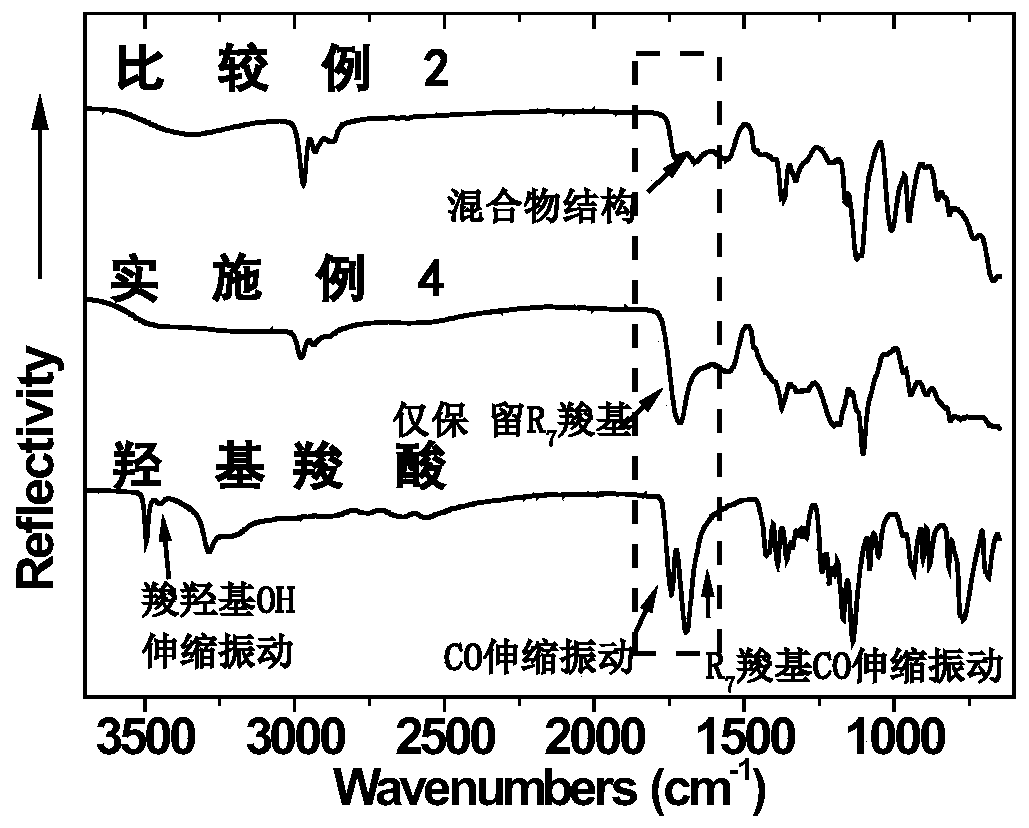Production method of poly(trimethylene terephthalate) with low cyclic dimer content
A polytrimethylene terephthalate and cyclic dimer technology, which is applied in the production field of polytrimethylene terephthalate with low cyclic dimer content, can solve problems such as environmental hazards and increased production costs, Achieve the effects of reducing downtime for cleaning, prolonging the service life, improving production and product quality
- Summary
- Abstract
- Description
- Claims
- Application Information
AI Technical Summary
Problems solved by technology
Method used
Image
Examples
Embodiment 1
[0040]Mix 142g of tetraisopropyl titanate with 124g of ethylene glycol and 22.5g of tartaric acid, and react for 4 hours at a temperature of 100°C in a stirred reactor, add 37g of zinc lactate to the reactant, In the reaction at 120°C for 4 hours. The reaction product is placed in a reactor equipped with a fractionation device, and isopropanol and water are distilled off to make a catalyst. The catalyst is mixed with 1,3-propanediol, wherein the mass fraction of titanium atoms is 4%.
[0041] 600 grams of terephthalic acid, 440 grams of 1,3 propylene glycol, 1.49 g of catalyst and stabilizer are mixed to form a slurry, which is added to a polymerization kettle for esterification reaction. The esterification temperature is 230 °C and the pressure is 0.25 MPa. The rectifying device discharges the water generated by the reaction, and reacts for 2 hours. After the esterification is completed, the pressure is lowered to normal pressure, and it begins to enter the pre-condensation...
Embodiment 2-4
[0044] Adopt the catalyst preparation method identical with embodiment 1, difference is that the addition amount of tartaric acid is respectively 75g, 120g and 190g.
Embodiment 5-6
[0046] The same catalyst preparation method as in Example 1 was adopted, except that 172 g of 1,3 propanediol and 180 g of 1,4 butanediol were used as straight chain diols.
PUM
 Login to View More
Login to View More Abstract
Description
Claims
Application Information
 Login to View More
Login to View More - R&D
- Intellectual Property
- Life Sciences
- Materials
- Tech Scout
- Unparalleled Data Quality
- Higher Quality Content
- 60% Fewer Hallucinations
Browse by: Latest US Patents, China's latest patents, Technical Efficacy Thesaurus, Application Domain, Technology Topic, Popular Technical Reports.
© 2025 PatSnap. All rights reserved.Legal|Privacy policy|Modern Slavery Act Transparency Statement|Sitemap|About US| Contact US: help@patsnap.com



